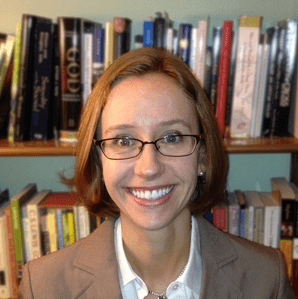From Arise, by my friend and colleague, Boaz Johnson:
In the Hebrew Bible, the books that follow Proverbs 31 give examples of an eshet chayil, a strong woman. These paradigmatic examples are found in the books of Job, Song of Songs, Ruth, Lamentations, Ecclesiastes, and Esther. I would like to focus on one of these eshet chayil: Ruth.
The narrative of Ruth begins with a famine in the land of Bethlehem—literally, the House of Bread. It is ironic that the place, which was supposed to be the physical and spiritual source of bread, should experience famine. A family from Bethlehem went to Moab, where women were treated very poorly. Many of the low class women were taken into female prostitution centers, which were linked to the worship of fertility gods and goddesses. The narrative of Ruth tells us that at this place, the sons of Elimelech get sucked into the cultural view of women, and they “took the women of Moab” (Ruth 1:4). Many English translations, translate their action as, “they married Moabite women” (NIV, NLT, NRSV, etc.). The Hebrew phrase is meant to be seen as, “they forcibly took Moabite women,” i.e. they raped them. The context suggests that they suffered the consequences of death because of their demeaning acts against the women of Moab. When one reads the narrative further, one discovers that the word used for Boaz marrying Ruth means to recreate. Boaz exclaims, “Ruth the Moabitess, the woman of Mahalon I have ‘recreated’ to be my woman to ‘resurrect’ the name of the dead…and the people at the gate and the elders said, ‘We witness. May the LORD make the woman coming into your house like Rachel and Leah, the two who built the house of Israel. May you be a chayil, in Ephrathah'” (Ruth 4:10-11, paraphrased). This is a great contrast to what the sons of Elimelech did. They engaged in human trafficking. Boaz, on the other hand, ordered his men to protect this woman, who was an alien and therefore trafficking material. Then he redeemed her, and gave her the place of highest honor, in front of the city gate, where historically the men and women of highest honor gathered—the lawns of the White House would be a modern analogy.
The Hebrew Bible suggests that the main purpose of the book of Ruth is the focus on Ruth as an eshet chayil, a prime example of the woman of Proverbs 31. In fact, on more than one occasion in the book, Ruth is called an eshetchayil (Ruth 3:11; 4:11). The book of Ruth is the story of the transformation of a woman who was sexually abused and treated as human trafficking material, into a strong woman and eshet chayil.
The New Testament has many examples regarding the restoration of women to a place of honor. The narrative of the life of Jesus in Matthew poignantly begins with underlining the lives of five women: Tamar (Gen. 38); Rahab (Josh. 2); Ruth, wife of Uriah (2 Sam. 11, 12); and Mary. Four of these women were sexually abused and trafficked by men in positions of power and authority. In spite of the horrible life faced by these women, the Bible elevates them to the highest status; they become the bearers of the Messiah seed. In doing so, paradigmatically, the Bible is elevating the status and name of all women who are abused and trafficked as a result of systemic evil in human history. The fifth woman, Mary, also grew up among girls who were regularly abused and trafficked by the Sadducees and the Roman soldiers. This was the reason that the most common name given to girls was Miriam, meaning “bitter,” since the life of the girl was assumed to be full of bitterness due to sexual abuse and human trafficking. Yet, miraculously, one girl was preserved, a virgin, to bear the Messiah of the world! She was not a virgin because she was the only one who was pure. She was a virgin because of a miraculous preservation of one girl. Mary becomes, in many senses, a symbol of hope for all girls throughout history, all over the world who are trafficked and abused by fallen humanity. This is indeed a thick answer to the problem of human trafficking.
The Messiah born by Mary elevated the status of so many women that he encountered. He knew what his own mother had gone through. She was ostracized by the so-called high class people, for carrying and bearing a child out of wedlock. He himself was called a mamzer—a term reserved for the children born by women who were sexually abused by Roman soldiers. During his public ministry, Jesus, knowing the horrible life faced by women around him, always reached out to them and restored their dignity. A good example is Jesus’ encounter with the Samaritan woman at the well in John 4. Jesus knew that Samaritan women were abused on a far more regular basis than low class Jewish women. They were the lowest of the low people group in the society around Jesus. They were constantly and systematically abused, just because they were Samaritans. During his conversation with her, at a poignant moment, Jesus asks her to “Go call your man.” She shrugs her shoulders and says, “I have no man.” Jesus says to her, “I know what you have gone through. I know that you really have had no man. Each of the other five have sexually abused you and battered you. The person who has you now is not really your man” (John 4:17-18, paraphrased). To this woman who had suffered so much because of systemic evil against women, Jesus offered the water of life—the water which alone could heal her deepest wounds. The rest of the narrative is a powerful example of how Jesus heals and elevates the status of a trafficked woman. She goes back to her town, and the whole village listens to her words. This woman, who was trafficking material and was sexually abused by men around her, is suddenly transformed into an eshet chayil, a strong woman.
The whole Bible has one narrative after another of the transformation of the status of women in society. It begins with a very strong place for the woman. She is no ordinary helper to man. She is a divinely placed savior figure—ezer kenegdo. Rather sadly, throughout history, human beings have destroyed and desecrated women. Evil men have shattered their true identity as strong help while women have been sexually abused and trafficked. Yet, in powerful ways, the Bible recreates the identity and the place of women. The Bible restores women to their creation identity of being eshet chayil—emotionally, physically, spiritually, and mentally strong women. They were created to be savior figures for humanity. This is the strongest and thickest answer to the problem of human trafficking.
***This article originally appeared in Social Injustice: What Evangelicals Need to Know About the World, edited by Michael T. Cooper and William J. Moulder (Lake Forest, IL: The Timothy Center Press, 2011).















